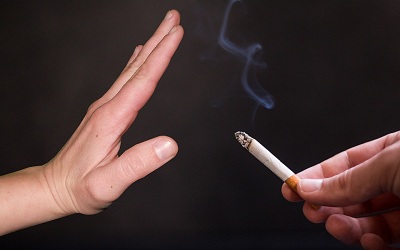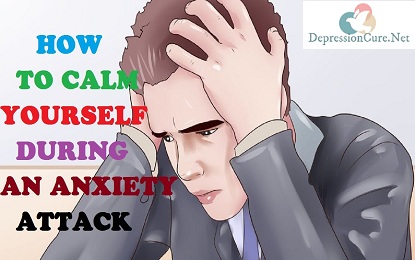Introduction
How do I stop smoking addiction? How many times have you promised and intended to quit smoking? But after a few days, you forget everything. In fact, we often fail in the intention about how to quit smoking because we are not mentally and physically prepared for it, nor are we fully committed to quitting smoking.
Although socially smoking has reduced nowadays. Smoking has been stopped at most workplaces, shopping malls, theaters and stores. But still, this terrible habit continues in society. Most people start smoking in teenage and get used to it until they grow up.

There are many different reasons for smoking in people like stress, the pressure of friends etc. And later, it becomes challenging to get rid of this addiction. But quitting smoking can be very difficult but not impossible. All you need for this is strong will power and efforts.
So let’s know about some tips and home remedies that can help you quit smoking addiction
How To Quit Smoking

Set your Quit Smoking Date
Once you decide to quit smoking it is necessary to decide the start date. Once you set a date, start working towards your goal. Like –
Announce your intention to stop the smoking to your family members, friends & colleagues. Their support & encouragement will strengthen your commitment and helps you in the weak stages.
Remove anything that may weaken your commitment. For example, throw the ashtray around the house, office or in your car. If a member of your family smokes, request them not to smoke in your presence.
If you plan to take medications to help you quit smoking, start them before your committed date.
Keep the option easy to use. When the day comes to start it all, the need to smoke often arises (the first few days are particularly difficult). Pour hard candy, sugar-free gum or vegetable sticks into the mouth whenever you feel the urge to smoke.
Click Here To Read: Read This Before Buying 60 Second Panic Solution
Avoid smoking triggers

If you have been smoking for a longer period, it becomes a common habit to engage in activities such as having a morning coffee or after drinking in the evening or after the last puff of dinner before going to bed.
Smoking together may be ideal for you. But when you quit smoking, these routine tasks become “triggers”, arouse craving once more. Since you cannot stop these things, it is necessary to disorganize them with smoking.
This can be difficult for you, but don’t smoke with these triggers before your “Quit Smoking Day” arrives. (How To Quit Smoking)
Dealing with smoking withdrawal

Nicotine is the major addictive compound present in cigarettes that affect many of your organs which includes your brain. When you decide to stop the smoking, your system will still want to smoke. It is not easy to fight your body, and also, your mind will rebel against it!
Withdrawal symptoms vary from person to person in type and intensity. They can range from unbearable craving for cigarettes to depression and irritability and sleep problems. 7-10 days are the worst.
This is the time when your strength will decline, and smokers will usually “slip” from their resolve. Every smoker has to find a tool that works for themselves. (How To Quit Smoking)
Nicotine replacement therapy
Nicotine replacement therapy (NRT) also protects against small doses of nicotine and other hazardous chemicals loaded in cigarettes. It helps smokers deal with stricter controls in the early stages of withdrawal from smoking. From over-the-counter (OTC) products to prescription-based measures, NRT comes in many forms to suit individual preferences.
Non-prescription (OTC) products

Nicotine Gum and Lazinz:
Chew or suck to reduce the amount of nicotine.
Nicotine Patches:
Small amounts of nicotine are released from the body when this patch is applied on the skin.
Doctor prescription products
Nicotine Inhaler:?
This product contains a cartridge filled with nicotine. Release nicotine from the mouth through a mouthpiece.
Nasal Spray:?
Nicotine-in-a-bottle which can be sprayed directly into the nose with a pump.
Click Here To Read: 75 Depression Quotes
How to stop the intense desire to smoke

- Nicotine is a tough enemy, and regardless of the route of medicine you choose, there will be many moments when your will power is against withdrawal.
- It is normal to feel anxious, depressed, or desperate when you struggle through quitting smoking. Try these pre-existing ways to counter your greed.
- Pamper yourself with healthy food and adequate sleep. Stay hydrated. These measures can give you the energy needed to fight excess stress.
- Eat several small meals daily instead of a few large meals. It helps balance blood sugar levels and eases the desire to smoke.
- Consuming spicy or sugar-filled foods can increase the desire for smoking a little. So stay away from them.
- Go for a long walk, go to the gym or try dancing or aerobics. Exercise can reduce stress, making you feel better.
- Take a shower or bath whenever you feel the urge to smoke.
- Play a new game. The added benefit of this is that you may be better at gaining weight after you quit.
- Take ten long breaths. When you inhale the last long breath, light a matchbox. Slowly extinguish the matchbox exhaling. And put it in an ashtray thinking that it is a cigarette. (How To Quit Smoking)

Counseling to Quit Smoking

The power of psychology should not be underestimated in the fight against nicotine. Consulting yourself will not help you kick to quit smoking.
However, when combined with medicine, your chances of stopping smoking are bright. Explore options for counseling, such as a regular, face-to-face session or telephone helpline, especially when the desire to smoke is powerful.
Some of the studies have shown that guided relaxation can help smokers successfully control nicotine intake. Deep-breathing exercises are also a form of guided relaxation. Talk to your doctor or psychologist to learn these techniques. (How To Quit Smoking)
Yoga to Quit Smoking

Some research studies suggest that yoga and cardiovascular exercises may help reduce nicotine weakness among smokers. Feel the experience of morning walks or running in the fresh air.
These asanas (yoga poses) and deep breathing techniques are naturally relaxing and beneficial for mind and body. Here are some examples of asanas that can specifically help you quit smoking:
- Bhujangasana (cobra pose) expands the chest & improves circulation.
- The bridge pose stretches the chest and increases the flow of oxygen in the body.
- The shoulder stand improves blood flow to the brain.
- Shishuasana or child pose has a calming effect on the nervous system.
All these postures also relieve stress and anxiety, helping you combat the symptoms of nicotine cravings and coping attendants. Pranayama (deep breathing yoga) inspires a deeply calm state of mind. Here are two famous techniques of Pranayama –
With the continuous practice of Kapalabhati Pranayama all the parts of the body are freed from the toxic element.
Pulse resection or Anulom Vilom Pranayama cleanses the subtle energy channel with its slow, deep rhythm, relaxing the body and mind and can help control withdrawal symptoms. (How To Quit Smoking)
Click Here to Read: 30 Ways Stress Can Affect On Your Body
Acupuncture to Quit Smoking

Acupuncture also helps people who quit smoking. Acupuncturists have used a unique technique where a fine needle is inserted into a set of five acupuncture points on the ears to help prevent withdrawal symptoms from smoking.
Ear Massage to Stop Smoking

Ear massage is another way of dealing with smoking cravings. The ear is considered the central area of ??the body to help stop smoking. When you massage your ears, it stimulates acupuncture points, which in turn decrease the desire to smoke. Massaging your ear for two minutes daily will help reduce smoking cravings.
Herbal Cigarettes for Quit Smoking

You can also try herbal cigarettes that contain 0% nicotine. They are bani with herbs such as mint, cinnamon, vanilla, liquorice. They are entirely nicotine free. And, they all come in lots of flavours.

Lobelia for Quit Smoking

Lobelia has an active ingredient called lobelin that helps reduce the effects of nicotine in the body, especially as it releases the neurotransmitter dopamine. Lobelia is also beneficial in reducing the craving for smoking.
It helps to relieve the symptoms of smoking such as nausea, burning sensation, too much hunger as well as poor concentration. Lobelia is available in the market as a vinegar. Take 20 to 60 drops thrice daily.
Note: People with high blood pressure or any type of heart disease should not take this herb. Pregnant women and children should also not take lobelia. (How To Quit Smoking)
Licorice Sticks to Stop Smoking

Licorice is a herb that can help in quitting smoking naturally. The slightly sweet taste of licorice helps kill the desire to smoke. Also, it relieves coughing to smokers.
Besides, this herb is an adrenal tonic and helps reduce fatigue and restore energy. Chewing a small stick of licorice root can fulfill your desire to smoke. You can also drink licorice root tea two or three times a day.
Note: People who have diabetes, high blood pressure, kidney or liver problems, then do not take it.
Cayenne Pepper to help Quit Smoking

Cayenne pepper also makes the respiratory system insensitive to tobacco and smoking to chemical stimuli. Also, its antioxidant properties stabilize the lung membrane.
Red pepper can also be used in various ways including fresh pepper, black pepper powder, capsules or tea to quit smoking. The best option, however, is to mix a few pinches of red chilly in a glass of water and consume it daily.
Click Here to Read: 10 Warning Signs of Chronic Anxiety Most People Ignore
Green Oats for Quit Smoking

Green oats, also known as Avena sativa. It is an effective herbal remedy that helps you quit smoking. A study which was done in year 1971 found that green oats can reduce nicotine cravings and reduce the discomfort of quitting smoking.
Also, green oats have a soothing effect as well as a tonic effect on the nervous system, which can be extremely beneficial for those who are struggling to quit smoking.
Green oats capsules are readily available in the market. You can take 300 mg of green oats daily, but be sure to consult a doctor for the correct dosage. (How To Quit Smoking)
Ginseng to help Quit Smoking

Ginseng or Ashwagandha can also help reduce the craving for smoking. It is considered as a tonic for the adrenal glands and helps to restore the proper cortisol levels in the bloodstream.
Ginseng helps the body under physical and emotional stress and restores balance in the body when experiencing withdrawal symptoms. It improves mood and reduces anxiety.
Drink a spoonful of ginseng powder in a glass of milk at your breakfast. This will help reduce the desire to smoke. You can chew dry ginseng in small amounts and can also consume its juice.
Note: If you are suffering from the heart problems, diabetes, auto-immune disease, etc., do not take ginseng.
Valerian to quit smoking

Valerian is a flowering plant which works as a herbal sedative and anxiety-reducing supplement and is known to be very useful in helping people quit smoking.
Also, valerian helps people cope with withdrawal symptoms from smoking such as discomfort, sadness, restlessness & anxiety. According to the American Cancer Society (ACS), valerian also helps people enjoy a more restful sleep.
This herb is available in market in the form of capsule, powder and tincture forms. You should take Valerian under the guidance of a doctor. (How To Quit Smoking)
Ginger to Quit Smoking

One of the most common withdrawal symptom of the smoking is nausea. This symptom can be relieved by consuming ginger juice.
Radish to Quit Smoking

It is another reliable home remedy to quit smoking. Tighten one radish and extract its juice. Add some honey and drink it at least two times a day.
Grape Juice to Quit Smoking

Grape juice has acidic content. Which helps in getting the nicotine out of the body. So when you are ready to quit smoking, drink grape juice daily.
Note: Depression Cure does not provide any type of medical advice, diagnosis, or treatment.





